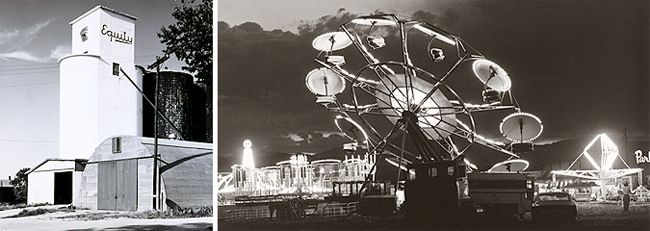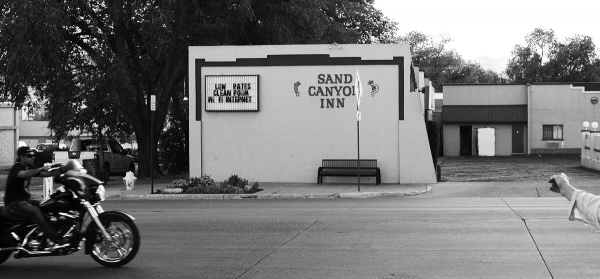Photographs at the DAM
 Robert Adams’ photographs at the Denver Art Museum are the spitting image of ones we’ve taken as young people exploring rural Colorado and beyond in the ’70s and ’80s. Or, more accurately, my imagined version of my photos. His are B&W and make the jarring primary colors of the commercialism of that day look tolerable. And the landscapes beautiful. Like the romanticism of Pete Seeger, ‘I am the blue of my sky and the brown of my earth.’ And they make the same folksy protest, as well.
Robert Adams’ photographs at the Denver Art Museum are the spitting image of ones we’ve taken as young people exploring rural Colorado and beyond in the ’70s and ’80s. Or, more accurately, my imagined version of my photos. His are B&W and make the jarring primary colors of the commercialism of that day look tolerable. And the landscapes beautiful. Like the romanticism of Pete Seeger, ‘I am the blue of my sky and the brown of my earth.’ And they make the same folksy protest, as well.
We didn’t and still don’t want to see all the beautiful land in the West churned up and spit out as another same-old shopping mall. Why not just leave it, and fix the old shopping mall? Well, because that land looks so easy, just lying there. Adams’ photographs prove it.

His photographs of a common farm house on the plains of eastern Colorado looks wonderfully textured in black and white, the wall paper less busy with color and the people richly gray. He didn’t make them to be nostalgic. He was just depicting life as it was, and it wasn’t that easy. With hindsight, we know few people of all those trying to keep that life were able to do so. There were still a lot of small farms in Colorado back then, but everything was changing. Farmers only grew what they could sell to big companies. They had no other outlet, no farmers’ markets in the city where they could sell heirloom lettuce, so they grew corn or sorghum or some commodity. And they had to buy Roundup.
We were, and still are, environmentalists. We wanted then, and still do want, organic food and clean energy. We environmentalists are the domestic terrorists that exPresident Bush warned everyone about. We personally may not have advocated burning private property, as the ELF did when Vail Resorts was building Two Elk Lodge (in memory of the elk that used to be there) on national forest land. I, personally, wouldn’t have had the nerve to do it, but I have advocated for less development, especially outside of established ski resorts. There are some who argue that Vail, and everything within 25 miles of it, is already ruined. But there are people who thought the new development was the place to draw the line. And they were completely ignored.
Logically, the ski business is flat, so they don’t need more property. And Two Elks was the opulent symbol of expansion by a Vail that couldn’t be stopped. The frustration of people who see Two Elks as unnecessary, and contributing little to most Earthlings, is the stuff that prompts terrorism. It prompted a little arson at midnight to a half finished building far out in the wilderness where there was no threat to human life or anything but the building – which was, to the perpetrators, a symbol of wastefulness.
If you understand this frustration, the feeling of not being heard, you can imagine why an Arab might want to become a terrorist? Can you imagine how hard it would be to be heard in a kingdom where you are a subject and not a citizen?
Look at the people calmly viewing Robert Adams’ photographs and you will see them smiling. They want that peaceful landscape. Then the scowls — people are bugged by the loss of citrus orchards in California. Orchards or shopping malls? People were rooting for the orchards but they lost. Too many shopping malls now sit between people and their orchards. Because most of us looking at these photos, now, live in the city.
Change isn’t necessarily bad. But are we doing very much to figure out which change is good and which is bad?
Robert Adams’ photographs might be a place to start.

